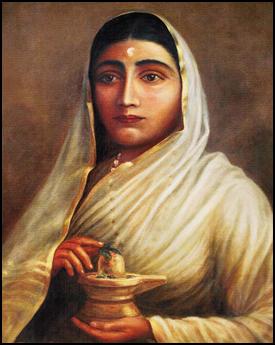Lokmata Devi Ahilyabai Holkar – 300th Birth Anniversary Commemoration

IN NEWS
Lokmata Devi Ahilyabai Holkar – 300th Birth Anniversary Commemoration
ANALYSIS
1. Context
- On 31 May 2025, the Prime Minister inaugurated multiple development projects in Bhopal on the 300th birth anniversary of Lokmata Devi Ahilyabai Holkar.
- A commemorative postage stamp and a ₹300 special coin featuring her portrait were released.
- The National Devi Ahilyabai Award was presented to a woman artist contributing to tribal, folk, and traditional arts.
- Earlier, on 20 September 2024, the PM launched the ‘Punyashlok Ahilyadevi Holkar Women Startup Scheme’ in Maharashtra offering ₹25 lakh financial assistance to women-led startups, with 25% reservation for women from backward classes and EWS.
2. Life History of Ahilyabai Holkar
- Birth and Background
- Born on 31 May 1725 in Chondi, Jamkhed (Ahmednagar, Maharashtra).
- Came from a humble family; father Mankoji Rao Shinde taught her reading and writing.
- Early Life and Marriage
- Noticed by Malhar Rao Holkar, who married her to his son Khanderao Holkar in 1733.
- Personal Tragedies
- Husband Khanderao died during the Siege of Kumher Fort (1754).
- Prevented from committing sati by Malhar Rao, who trained her in administration and warfare.
- Malhar Rao died in 1766; her son Male Rao died in 1767.
- Rise to Power
- Petitioned the Peshwa to allow her to take charge of Malwa; despite opposition, the army backed her.
- Became ruler of Indore on 11 December 1767.
3. Governance and Administration
- Military and Strategic Skills
- Trained in warfare; led armies herself.
- Laid the foundation of the Holkar army in 1792 (as per narrative tradition).
- Good Governance
- Held daily public audiences.
- Ensured justice, welfare, and effective administration.
- Capital Maheshwar became a cultural hub for poets, artists, musicians, and scholars.
- Economic Contributions
- Established the textile industry in Maheshwar, now famous for Maheshwari sarees.
- Encouraged trade, supported farmers, and promoted industrial activity.
4. Nation-Building Contributions
- Temple Construction and Restoration
- Renovated Kashi Vishwanath Temple (1780).
- Rebuilt Old (Juna) Somnath Temple in Gujarat.
- Built and restored temples across Haridwar, Kashi, Somnath, Rameshwaram, and more.
- Infrastructure Development
- Built roads, ghats, wells, tanks, and dharamshalas across India.
- Encouraged education by establishing gurukuls and schools.
- Women’s Empowerment
- Created a women’s army trained in self-defense and administrative security—remarkable for the 18th century.
- Cultural Patronage
- Patronized arts, literature, and music, turning her kingdom into a cultural center.
5. Legacy
- Passed away on 13 August 1795 at the age of 70.
- Referred to as the “Philosopher Queen” for her wisdom and philanthropic outlook.
- Remembered for rebuilding Kashi Vishwanath and uplifting Indore and Maheshwar.
- Her works continue to shape India’s cultural and architectural heritage.
STATIC PORTION
- Holkar Dynasty
- Part of the Maratha Confederacy.
- Capital: Indore / Maheshwar (during Ahilyabai’s rule).
- Kashi Vishwanath Temple Reconstruction
- Rebuilt by Ahilyabai Holkar in 1780 after its destruction by Mughal rulers.
- Maheshwari Sarees
- Origin: Maheshwar, Madhya Pradesh.
- Patron: Ahilyabai Holkar.
- Peshwa Role
- Supreme authority in Maratha polity who approved her accession.
Updated – 31 May 2025 ; 06:02 PM | PIB
News Source: PIB (https://www.pib.gov.in/FeaturesDeatils.aspx?NoteId=154531&ModuleId=2)